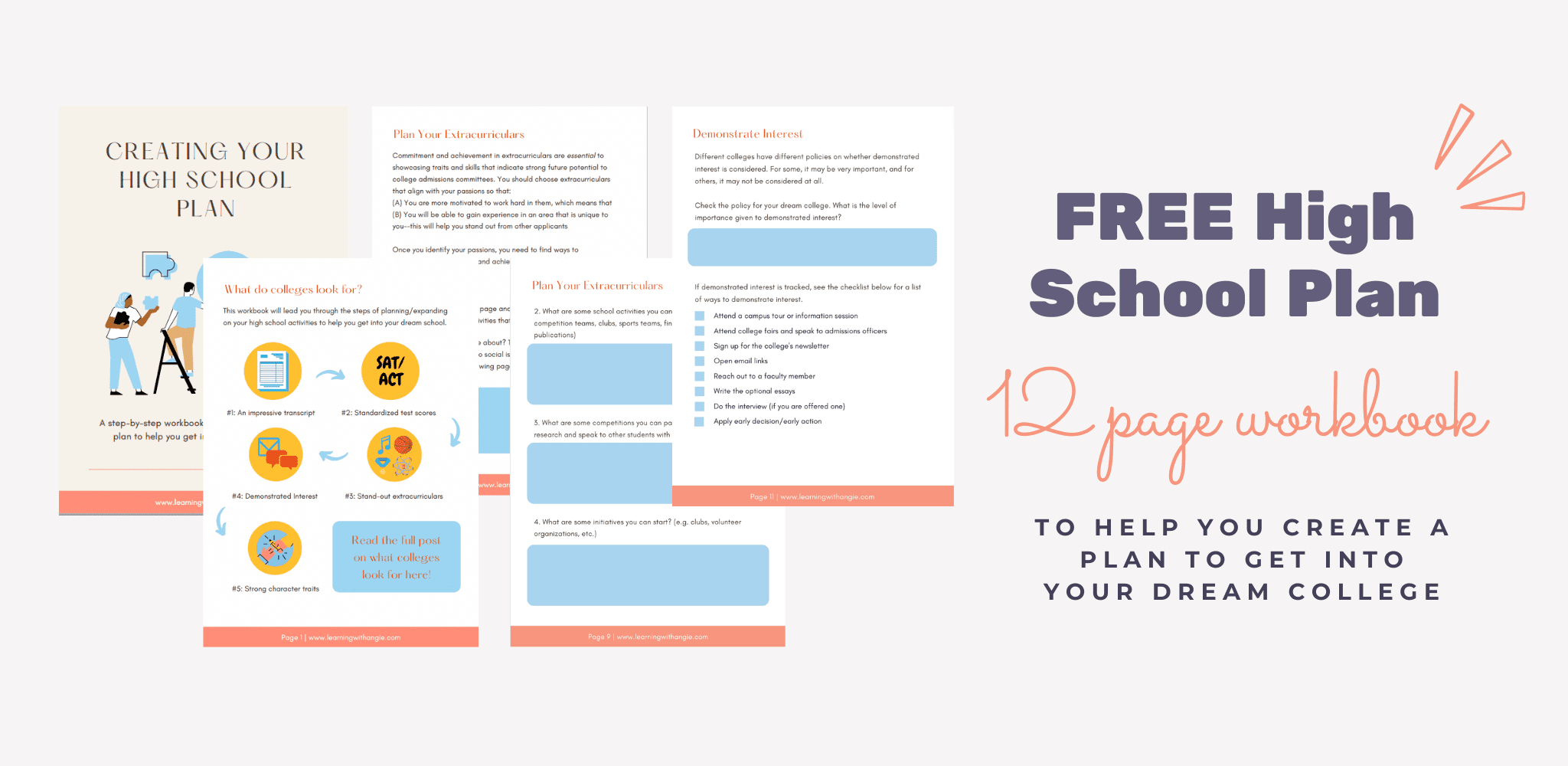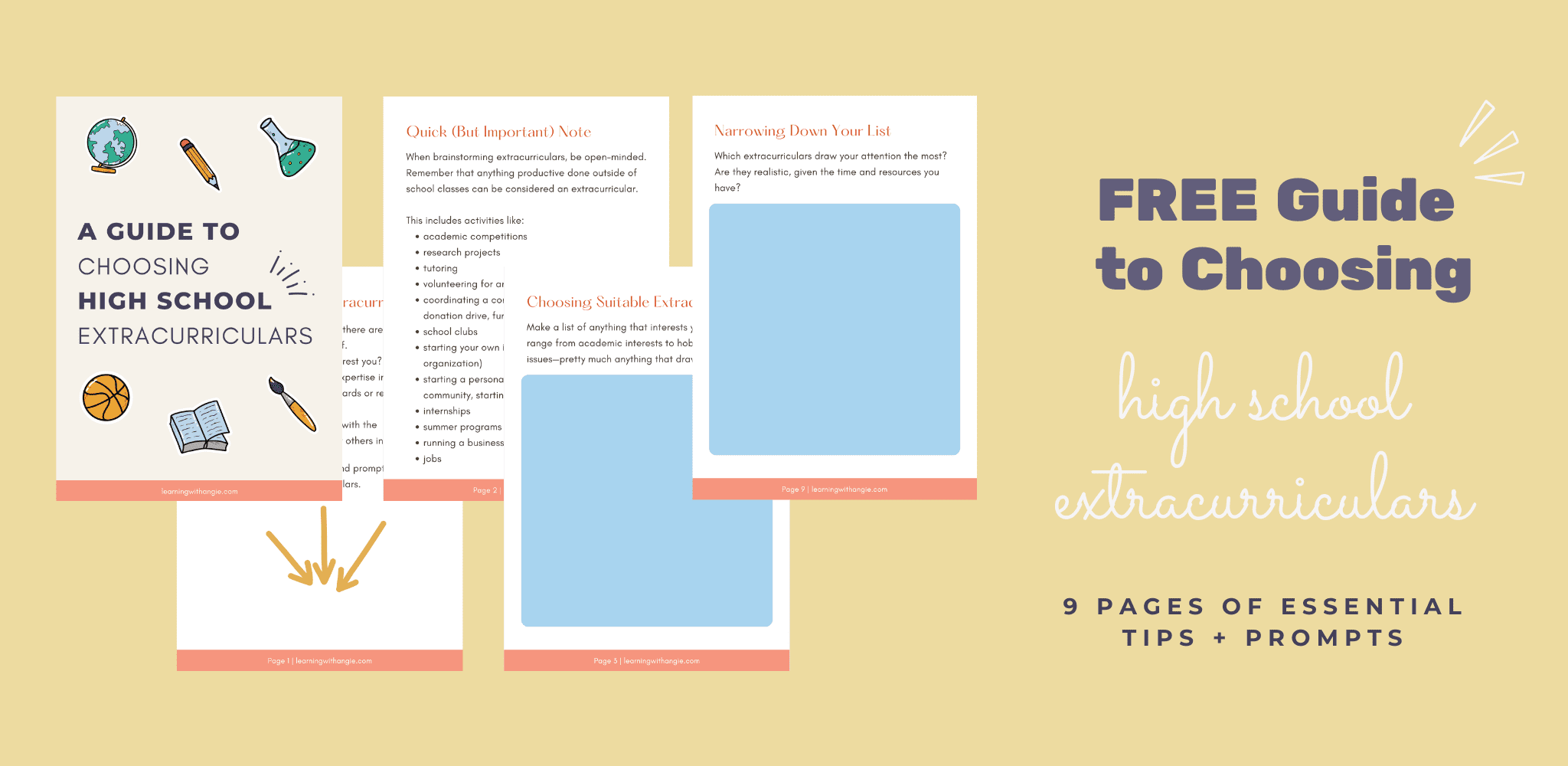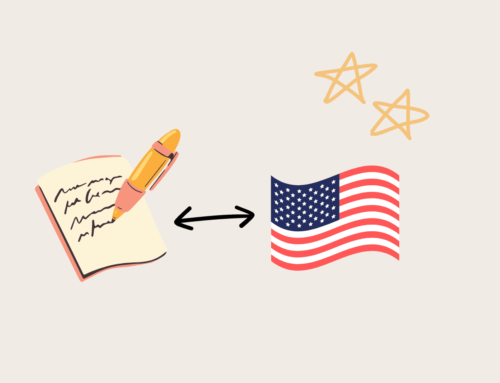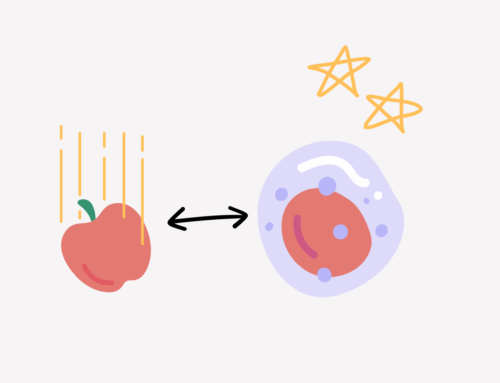

If you’re reading this post, you’re probably taking AP English Language and Composition this year (if you’re taking AP English Literature, check out this guide on how to annotate books for AP English Literature instead).
Your summer assignment is to read and annotate a book (or two… or even three, depending on your teacher) and complete an assignment on it.
Or, the school year has already started and you have a similar assignment, and you’re not sure what to do.
When I first started AP English Language, I had no idea how to annotate properly either. I felt overwhelmed and unsure of where to begin.
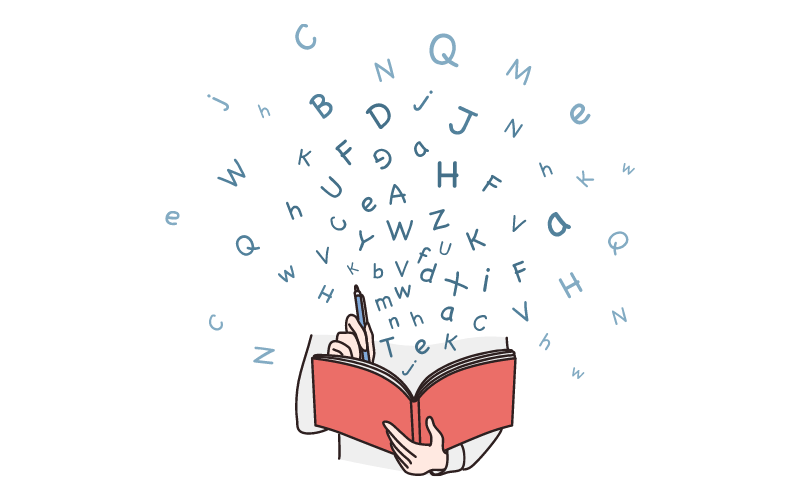
However, over a year, I learned to refine my annotation techniques. This helped me with critical analysis on the AP exam and led me to score a 5.
In this article, I’ll be providing a step-by-step guide on how to annotate a book for AP English Language effectively. At the end of it, you’ll also know how to prepare yourself for effective annotation and analysis on the actual AP English Language exam.
What is the purpose of the AP English Language course? How is it different from AP English Literature?
AP English Language and AP English Literature are two different courses with two very different aims. When you read and annotate texts for these two courses, you should be looking for and thinking about different things.
Therefore, it’s essential to understand the distinction if you want to do effective annotation.
What Does AP English Language Assess You On?
AP English Language assesses your ability to:
- Identify an author’s attitude toward a subject
- Identify and explain the rhetorical devices the author uses to persuade you of their opinion
- Make your own effective arguments
Let’s take the example of 1984 by George Orwell, a very commonly-used novel in AP English Language classes.
Orwell wrote the book to address totalitarianism. It’s clear from the book that Orwell disapproves of totalitarianism entirely—the whole point of the book is to show how dangerous it is.
In the book, Newspeak is the official language of the totalitarian state of Oceania. It is very limited in what it allows speakers to express, thus controlling their thoughts and ability to resist. Newspeak can be interpreted as a symbol of psychological control and censorship.

Through the use of Newspeak, Orwell illustrates the terrifying control a totalitarian government can exert over people. This is an effective way of conveying his condemning attitude toward totalitarianism.
In AP English Language, you’ll be interpreting many speeches, cartoons, and other forms of media. You’ll be analyzing how authors make their content persuasive. Then, you’ll use what you’ve learned to make your own persuasive arguments.
What does AP English Literature Assess You On?
AP English Literature assesses your ability to:
- Identify the deeper themes in a text (how the text relates to humanity and life)
- Identify and explain literary devices the author uses to convey the themes
Let’s take the example of Frankenstein by Mary Shelley, a commonly-used book in AP English Literature classes.
A primary theme in the novel is the dangers of unrestrained scientific exploration.
Throughout the novel, Shelley uses setting changes to demonstrate how Victor Frankenstein’s scientific ambitions have increasingly isolated him from humanity. Victor goes from living at home to attending boarding school to working in a lab in the mountains to doing a mad goose chase in the Arctic.

As he becomes increasingly engrossed in his scientific work, he becomes increasingly alienated from humanity, both physically and figuratively. The setting of the novel reflects this evolution.
In AP English Literature, you need to read novels and poems and understand their universal themes relating to humanity.
You may also like “Most Impressive AP Classes + Useful Tips to Succeed in Them”
What is Annotating?
Before you start annotating a book for AP English, you need to understand what annotating is.
Annotating involves thinking beyond the meaning of the words on the page.
When reading a novel, this means thinking beyond the immediate events of the plot. It means asking questions like, “Why does the author use this metaphor here? What message are they trying to convey?”
When reading a speech, this means thinking beyond the surface meaning of the speaker’s words. It means asking questions like, “What is the context in which the speaker gave this speech? What audience were they addressing? How did these factors affect how they communicated their ideas?”

When you annotate, you should constantly be thinking about the greater significance of literary and rhetorical choices made by the author. Then, you should jot down your thoughts in the margins.
Why is Annotating So Important?
Knowing how to annotate a book for AP English Language is extremely important because it teaches you how authors persuade their readers effectively. As a result, you learn how to make more effective arguments in your writing.
On the AP English Language exam, you will need to write three essays: one analysis of a rhetorical passage and two argumentative essays of your own. By annotating properly, you develop the critical thinking skills necessary to identify and explain rhetorical devices, as well as logically argue your point.
Beyond the course, you’ll find that you become more aware of the rhetorical strategies in everything you read. Also, your ability to make effective arguments will come in handy in many situations.

What Tools Do You Need to Annotate?
To annotate, you only need a few things that you probably already have:
- A highlighter
- A writing instrument (pencil or pen is fine)
- A copy of the book you’re annotating
- Your brain
And that’s it! Just remember that you shouldn’t go crazy with underlining or highlighting long sections. Your annotations, while detailed, should be legible. If you want to make a note about a long section, I suggest bracketing it.
Steps to Annotate a Book for AP English Language Effectively
We’ve finally reached the section on how to annotate a book for AP English Language. By following the 5 simple steps below, you’ll be on your way to becoming a better AP English student and critical thinker.
You may also like "The Ultimate Guide to Get a 5 on AP U.S. History"
Step #1: Actively Think Beyond the Surface Meaning
The whole point of annotating is to get you to think beyond the surface meaning of the words.
From the moment you pick up your book, you should be questioning the significance of various details. Why did the author include this reference? Why did the author include this character? What is the significance of these lines of dialogue?
Authors include certain details for a reason. Your goal should be to make educated guesses about those reasons.
Also, annotating shouldn’t feel easy because it isn't easy. As you’re reading and annotating, you should feel the gears of your brain turning.

Step #2: Think About the Author’s Message
A huge part of AP English Language is being able to identify the argument an author is making and how they make their argument effective.
As you’re reading, contemplate the author’s message. For example, in 1984, George Orwell’s message to readers is that totalitarianism is extremely dangerous.
Step #3: Identify Rhetorical Devices
To understand how authors make effective arguments, you need to explain how the rhetorical devices they use contribute to their argument.
As this source describes it, “Rhetorical devices are formative techniques used to evoke emotion or persuade.” In other words, they are tools employed by authors to convince you of their opinion.
Below, I've included a list of the rhetorical devices I most commonly referred to as an AP English language student.
Ethos
Ethos is used to show that the author is qualified to speak about a topic. For example, a speaker talking about the possibility of parallel universes may talk about their educational background and research in physics.
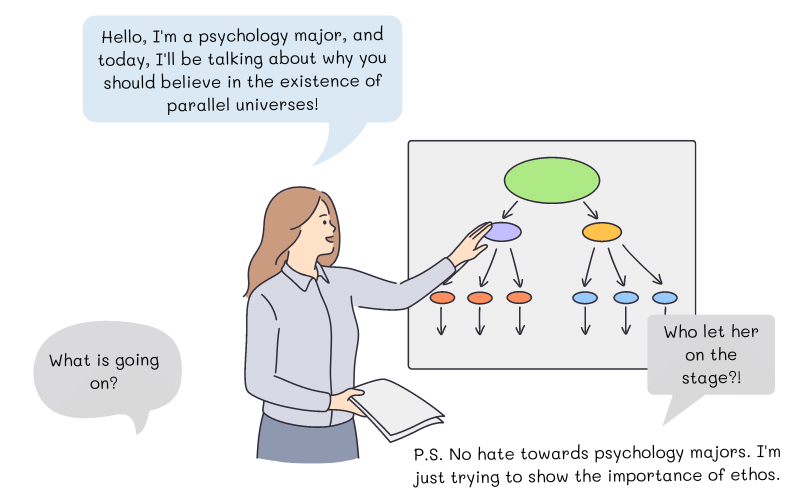
Hello, I'm a psychology major, and today, I'll be talking about why you should believe in the existence of parallel universes. Boo! Next! PS No hate against psychology majors, but I hope you see my point.
Pathos
Pathos is an appeal to the audience’s emotions. For example, an environmental activist raising awareness about habitat protection may show images of animals suffering from habitat loss.
Logos
Logos is an appeal to the audience’s logical reasoning. For example, the author of an article about why people should stop texting while driving may include statistics about accidents related to phone usage.
Juxtaposition
Juxtaposition is where two things are placed next to each other to accentuate their contrast.
For example, consider these few lines from the 2016 AP English Language rhetorical analysis passage:
“Others prophesied the decline of the West. He inspired America and its allies with renewed faith in their mission of freedom.
Others saw only limits to growth. He transformed a stagnant economy into an engine of opportunity.
Others hoped, at best, for an uneasy cohabitation with the Soviet Union. He won the Cold War, not only without firing a shot, but also by inviting enemies out of their fortress and turning them into friends.”
In this section, Margaret Thatcher contrasts what people expected and what Ronald Reagan did. In doing so, she shows how Reagan was a resilient, capable leader who found a way to succeed in times of difficulty.
This contributes to her overall message: that Reagan was an incredible leader, dedicated to promoting the welfare of the American people.
Syntax
Syntax is how words and sentences are arranged. It is an artistic choice that can be used to emphasize an author’s message.
In the excerpt from Thatcher’s speech, you can see that she uses syntax to convey her message. She alternates between starting sentences with “Others” and “He”.
In doing so, she marks the contrast between majority pessimism and Reagan’s resilient, inspiring attitude.
Simile
A simile compares two objects using “like” or “as”.
In the following excerpt from the 2021 AP English Language rhetorical analysis prompt, the writer (novelist Marian Evans Lewes) uses a simile:
“What comes after, is rather the sense that the work has been produced within one, like offspring, developing and growing by some force of which one’s own life has only served as a vehicle, and that what is left of oneself is only a poor husk.”
In the passage, Lewes is responding to a young woman who has written to her about her dreams to become an author. In her letter, she advises the young woman to be patient and faithful about writing, instead of being driven by ambition.
Through this simile, she shows that the success of one’s work does not usually bring glory. Instead, like nurturing a child for 9 months in one’s body, it leaves you drained.
In doing so, she emphasizes her point that a writer should not be driven by ambition. What ambition promises—the glory of your success—is usually not fulfilled.
Metaphor
A metaphor compares two objects to one another directly, without using “like” or “as”.
In the same passage from Lewes, she uses a metaphor:
“It is a misfortune to many that they begin to write when they are young and give out all that is genuine and peculiar in them when it can be no better than trashy, unripe fruit.”
She evokes a direct comparison between immature writing and “trashy, unripe fruit”. In doing so, she emphasizes her point that the young woman should not be impatient.
Imagery
Imagery is an appeal to the five senses. In the 2021 AP English language rhetorical analysis passage, former president Barack Obama uses imagery:
“... not thinking about the blisters on their feet, the weariness after a full day of work…”
In this excerpt, he was referring to the thousands of people who boycotted public transportation in Montgomery, Alabama.
The main message of his speech was to encourage the American people to stand up for justice as Rosa Parks did. By appealing to the senses through details like “blisters” and “weariness”, Obama demonstrates the resilience and admirability of people who stand up for justice.
Diction
Diction refers to the word choice of the author. Simply referring to diction as a rhetorical device is not enough. You have to be specific about the type of diction the author employs.
Does the author use formal language? Or perhaps the author uses colloquial phrases?
For example, a speaker may use colloquial phrases to relate to their audience. In contrast, if the same speaker were to use formal language, their message would not resonate as deeply with the audience.
You may also like "How to Take APUSH Notes—Improve Speed, Memory, and Grades"
Tone
Tone is used to describe an author’s attitude toward a subject. There is an endless list of tone words to choose from, but generally, the more specific, the better.
For example, saying that an author has a negative tone regarding a subject doesn’t say much. However, saying that the author has a condemnatory tone tells more about their attitude.
Here is an example of tone as a rhetorical device in practice:
Say that your mom is angry at you for turning in your homework late. As a result, she tells you that your lack of discipline will hurt you in more major ways than a small homework grade in the future.
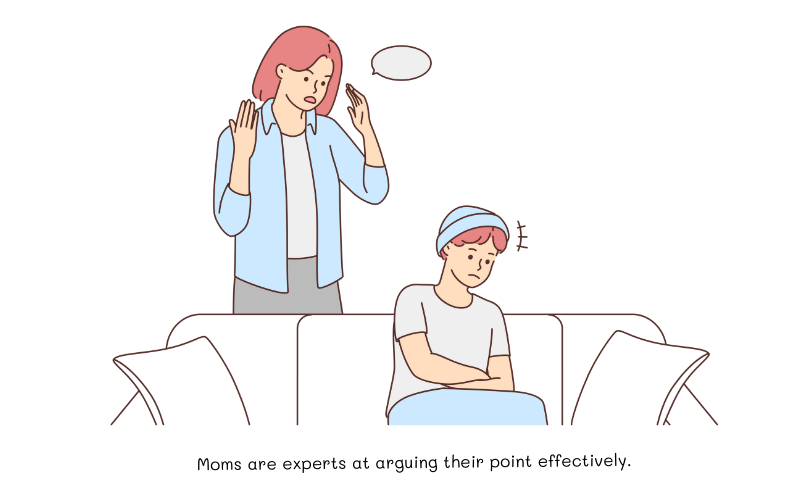
Her condemnatory tone makes you realize what a poor choice you made by watching TV instead of doing homework.
She convinces you to see the situation from her point of view: that not doing your homework demonstrated a lack of discipline, which will have far-reaching consequences if you don't fix it.
These are just a few examples of rhetorical devices to look for when annotating a book for AP English. Check out a more comprehensive list of rhetorical devices with examples here.
Step #4: Comment on the Significance of the Rhetorical Device
Once you’ve identified the rhetorical device, you need to comment on its significance. If you don't, there’s no point in marking it.
Simply identifying metaphors or similes or clever syntax doesn’t tell anything about the author’s message or rhetorical choices.
Notice that in the examples I provided in the previous step, I always linked the rhetorical device back to the author’s main message.
While annotating, you should be thinking along these lines as well.
Ask yourself questions like, “How does this detail relate to the author’s main message?” and “How does the author use ethos, pathos, and logos to convince me of their message?” (One of my summer assignments for AP English Language was to identify at least 5 examples each of ethos, pathos, and logos in a book. You must be familiar with the rhetorical triangle and be able to apply it.)
Step #5: Don’t Be Afraid to Mark Other Things
Although it’s important to mark rhetorical devices while reading, you can also mark anything else that warrants a comment.
Not every annotation needs to be incredibly deep and meaningful.
As you’re reading, jot down questions you have or other comments, like an emotional response or a connection to something you’re familiar with.

FAQ About Annotating
How Much Should You Annotate?
A common question I see asked is how much to annotate.
In general, I suggest writing as much as possible. Whenever some deeper meaning emerges to you, immediately jot it down.
Also, I recommend going back and rereading. Each time you reread, you will notice new details worth noting down.
However, keep in mind that more does not always mean more. Annotating more does not always equal more value.
Make sure your annotations are meaningful—most of them should probe beyond the surface meaning of the words on the page. They should relate to the message and rhetorical choices of the author.
How Do You Annotate Without Ruining the Book?
Another question I see frequently is how to annotate a book without ruining it.

Ahhh but it's so beautiful! It would be a crime to write in this
As a book lover who likes to keep my books pristine, I can empathize with this dilemma. In general, however, I am mostly particular about books that hold special memories.
When it comes to non-fiction books and assigned readings, I actually prefer to annotate extensively. Sometimes, I jot down my thoughts directly in the margins. Other times, I highlight a few sentences and write down my thoughts on a sticky note.
However, if you are still worried, check out these options for annotating without writing in the book.
Overview of How to Annotate a Book for AP English Language
To annotate a book for AP English Language effectively, you should always be thinking about:
- The author’s message
- Rhetorical choices made by the author to convince you of their message
To do this, you should be:
- Actively thinking beyond the surface meaning of the words
- Contemplating the author’s overall message
- Identifying rhetorical choices
- Explaining the significance of the rhetorical choices
- Asking questions and marking anything else worth bringing attention to
Additionally, it’s good practice to reread because with each reread, you will notice new important details.
Annotating effectively isn’t an easy skill, but it is a valuable one. When you feel discouraged, remember that annotating should feel like it’s really working your brain.
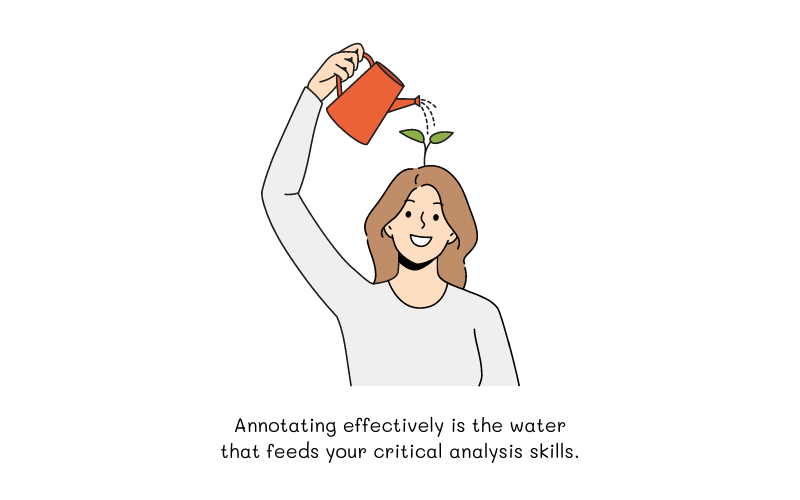
If you feel the gears of your brain turning, remember that you’re strengthening your critical thinking skills. These critical analysis skills will be essential for your success on the AP English Language and Composition exam and beyond.
I hope you found this guide to annotating books in AP English Language helpful! Let me know which book you’re currently reading for AP English Language in the comments below!
For more posts on AP class tips, check out:
- How to Annotate a Book for AP English Literature
- Most Impressive AP Classes (+ Useful Tips to Succeed in Them) Part 1—math and science
- Most Impressive AP Classes (+ Useful Tips to Succeed in Them) Part 2—humanities/social sciences and foreign language
- The Ultimate Guide to Get a 5 on AP Spanish Language and Culture
- The Ultimate Guide to Get a 5 on AP U.S. History

Learning With Angie is a place to share honest, unfiltered advice to promote student success. So if you’re a student (high school, college, or beyond) looking for tips on productivity, studying, personal growth, and more to reach your potential, this is the place! To read more about Learning with Angie, click here.

